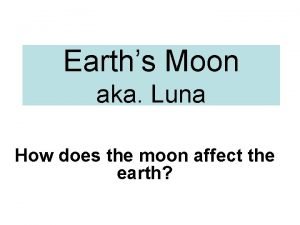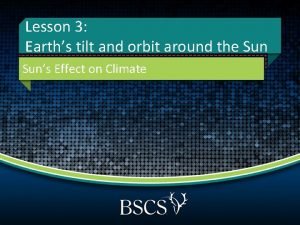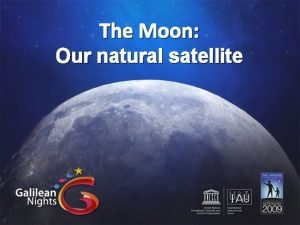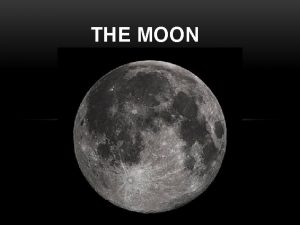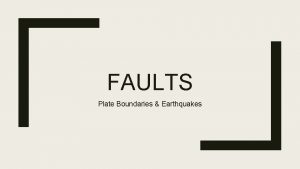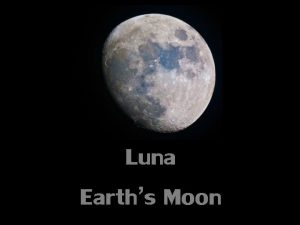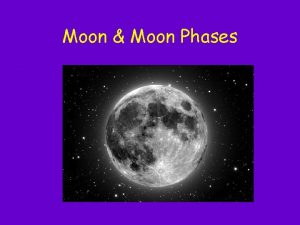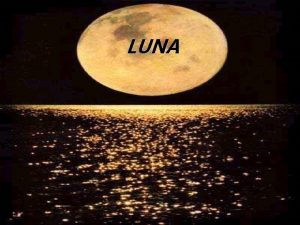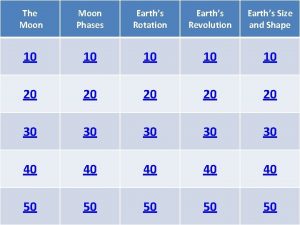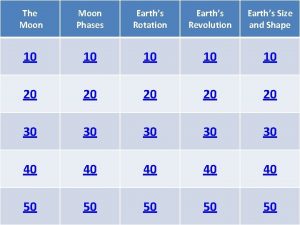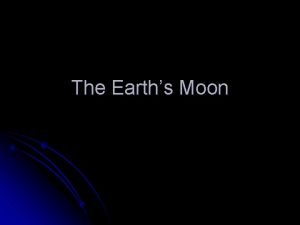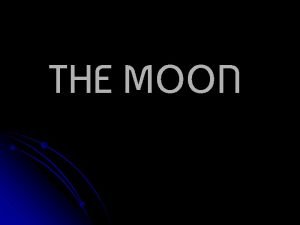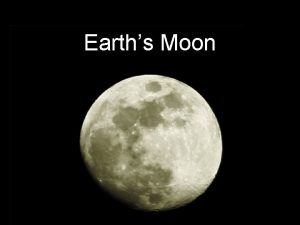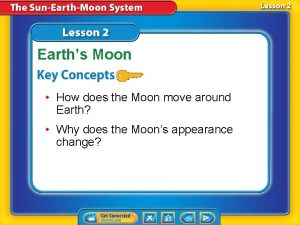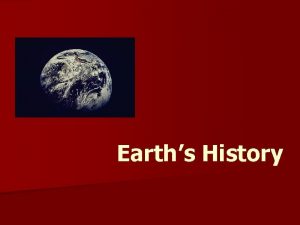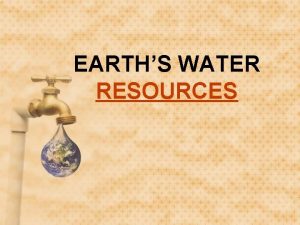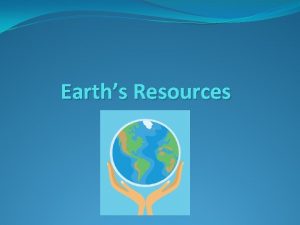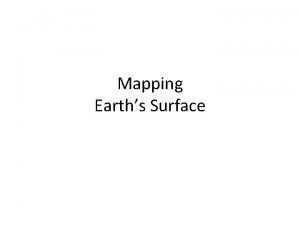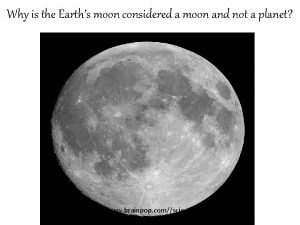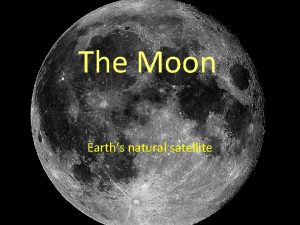Earths Moon aka Luna How does the moon































- Slides: 31

Earth’s Moon aka. Luna How does the moon affect the earth?

How far away is the MOON? • 380, 000 km (about 239, 000 miles)



What is a SATELLITE? • A natural or man made object that revolves around a planet • (A natural satellite is a MOON)

What is the moon doing out in space? • Revolving around the Earth in a counterclockwise direction • Rotating on its axis as it goes around the Earth

Where did the Moon come from?

Giant Impact Theory • Earth struck by large body, size of Mars. • Part of body + Earth flung into space. • Captured by gravity of Earth.

What is Gravity? • Natural phenomenon by which all physical bodies (anything with mass) attract each other • holds celestial bodies together • keeps celestial bodies in orbit


What effect does the moon have on Earth? • Tides- • rise and fall of water levels due to gravitational forces • Occur twice a day (2 high tides, 2 low tides) http: //home. hiwaay. net/~krcool/Astro/moontides/

high tide low tide



How are Tides created? • (3 ways) 1. Because the Earth and the moon are attracted to each other http: //home. hiwaay. net/~krcool/Astro/moontides/

Moon and earth are attracted to each other by gravity

Tides are also created by: • 2. the rotation of the earth, • 3. and the sun’s gravity

The sun can raise the tides, too Spring Tides

Tides are not waves!

What are Spring tides? • Tides that produce the greatest difference between high and low tides— The biggest tides • Occur twice a month

When do spring tides occur? Spring Tides combined with big storms • Once at the full moon and once at the new moon • When the sun moon and earth are nearly in a line

The sun can raise the tides, too Spring Tides –the sun and the moon line up

What are NEAP Tides? • Tides that produce the least difference between high and low tides—The smallest tides • Occur twice a month

When do neap tides occur? • Once at the first quarter and once at the third quarter • When the sun moon and earth are at right angles to each other http: //www. space. gc. ca/asc/eng/educators/resources/astronomy/multimedia/module 3/tides. swf


The neap tides –the smallest tides – when the sun and moon are at a 90 angle

• What other effects do we have from the moon? ?


The phases of the moon


http: //www. astro. wisc. edu/~dolan/ja va/Moon. Phase. html • Moonrise from Earth: The moon rises and sets every day, appearing on the horizon just like the sun. The time depends on the phase of the moon. It rises about 30 to 70 minutes later each day than the previous day, so the moon is out during daytime as often is it's out at night. At the time of the new moon, the moon rises at about the same time the sun rises, and it sets at about the same time the sun sets. As the days go by (as it waxes to become a crescent moon, a half moon, and a gibbous moon, on the way to a full moon), the moon rises during daytime (after the sun rises), rising later each day, and it sets at nighttime, setting later and later each night. At the full moon, the times of moonrise and moonset have advanced so that the moon rises about the same time the sun sets, and the moon sets at about the same time the sun rises. As the moon wanes (becoming a half moon and a crescent moon, on the way to a new moon), the moon rises during the night, after sunset, rising later each night. It then sets in the daytime, after the sun rises. Eventually, the moon rises so late at night that it's actually rising around sunrise, and it's setting around sunset. That's when it's a new moon once again. http: //www. harcourtschool. com/activity/moon_phases/
 Whats earths moon called
Whats earths moon called Whats earths moon called
Whats earths moon called Whats the name of earths moon
Whats the name of earths moon Aka luna
Aka luna Spring earth tilt
Spring earth tilt What does earths tilt do
What does earths tilt do Duo servicekantoor
Duo servicekantoor Which moon phase occurs directly before a new moon
Which moon phase occurs directly before a new moon Moon sister moon calendar
Moon sister moon calendar Home.hiwaay.net/ krcool/astro/moon/moon tides/
Home.hiwaay.net/ krcool/astro/moon/moon tides/ What phase is this
What phase is this Earth layers foldable
Earth layers foldable Earths roation
Earths roation Home sweet biome crossword
Home sweet biome crossword Chalogen elements
Chalogen elements Basalt
Basalt Earth's thickest layer
Earth's thickest layer Earths early atmosphere contained
Earths early atmosphere contained Earths layer foldable
Earths layer foldable Earths major crustal plates
Earths major crustal plates Earths orbit seasons
Earths orbit seasons Brown earth soil ireland
Brown earth soil ireland Study of earth's physical features
Study of earth's physical features Earth's honey
Earth's honey Earths mantle
Earths mantle Earths crust
Earths crust Earths interior
Earths interior Define atmosphere
Define atmosphere What's the shape of earth's orbit
What's the shape of earth's orbit Arch of constantine dimensions
Arch of constantine dimensions Earths boundaries
Earths boundaries 4 spheres of the earth
4 spheres of the earth



